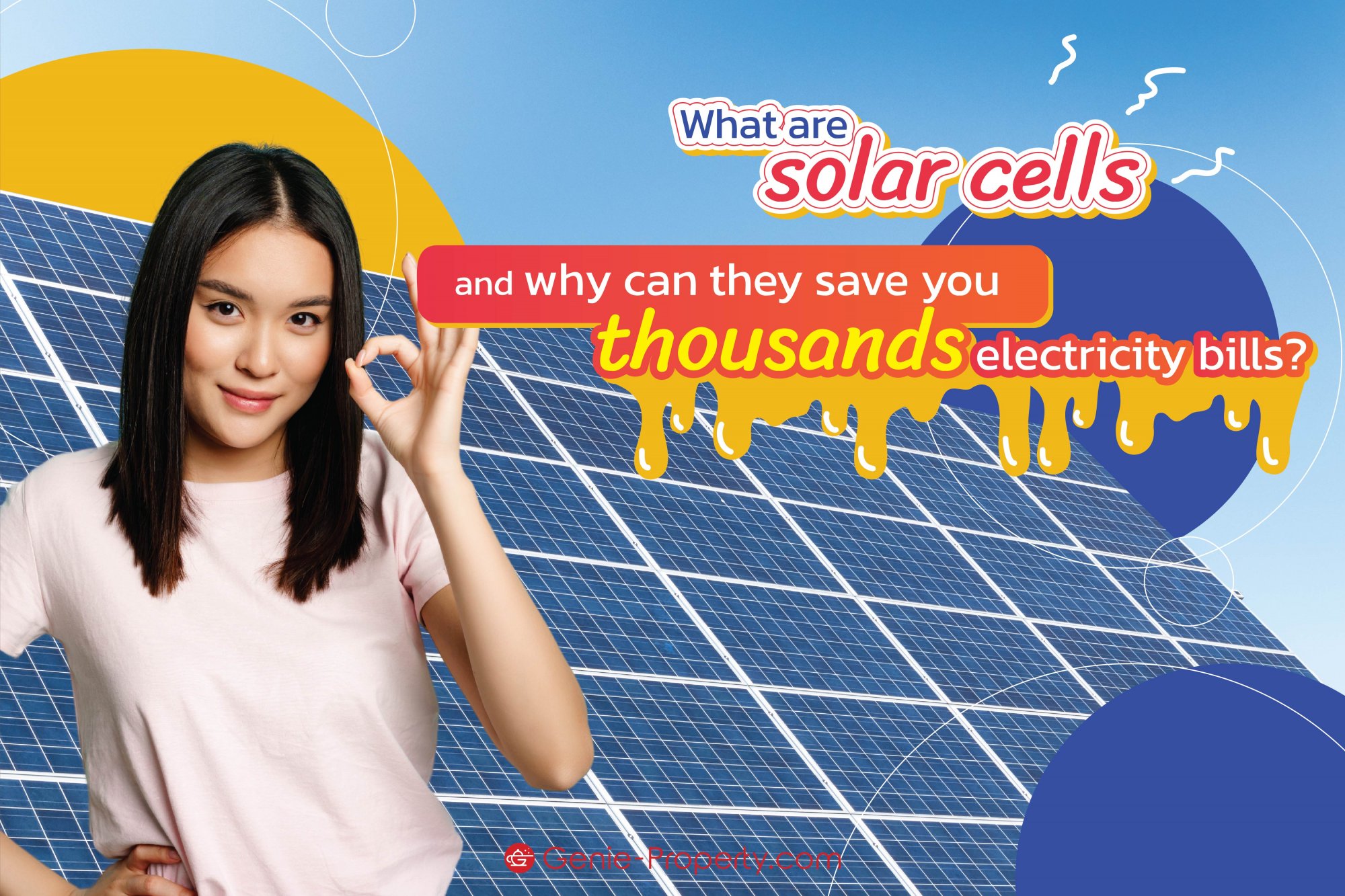What are solar cells, and why can they save electricity up to thousands?
Created Jun 21, 2023
As more people are staying at home and working remotely, the trends of environmental conservation and energy efficiency have become increasingly popular. Today, Genie has an article about renewable energy or solar energy, also known as 'solar cells,' to share with everyone. If you're ready, let's get to know 'solar cells' together.
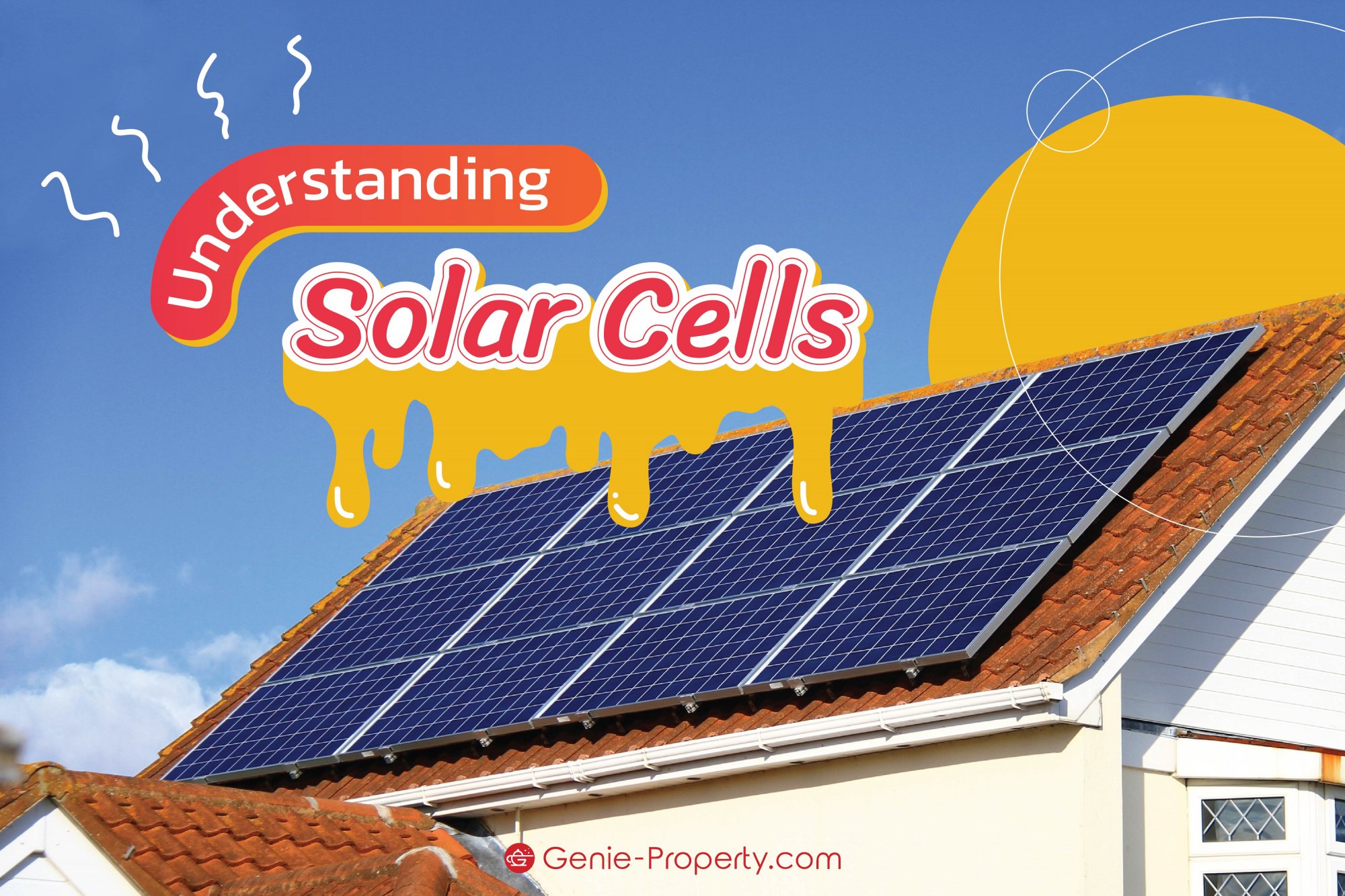
1. Solar Cell - What is it?
Solar cells are electronic devices that have been invented to convert solar energy into electrical energy. The energy obtained from solar cells is referred to as "clean energy" because it is free from pollutants. We can use this energy without any limitations. The electric current produced by solar cells is in the form of direct current (DC) with a positive (+) and a negative (-) terminal. We can immediately harness this energy for various purposes.
Using solar cells to generate electricity instead of fossil fuels not only leads to significant cost savings but also helps reduce various environmental issues. The energy produced by solar cells has no adverse impact on the environment, unlike other sources of energy. It doesn't release greenhouse gases like those associated with traditional energy sources.
2. Solar Cell - How does it work?
The operation of a solar cell, or the process of generating electricity from a solar panel, involves five main components:
- Solar Panel
- Inverter
- Switchboard
- AC Meter
- Power Grid Connection
The process relies on sunlight. When sunlight hits the solar panel, it excites electrons in the solar cells, creating an electric current. This direct current is then sent to the inverter, which converts it into alternating current. The converted electricity is then measured by the AC meter and can be used to power various parts of the house.
However, if there is insufficient sunlight due to factors such as rain or heavy cloud cover, the system automatically switches to the grid electricity as a backup power source.
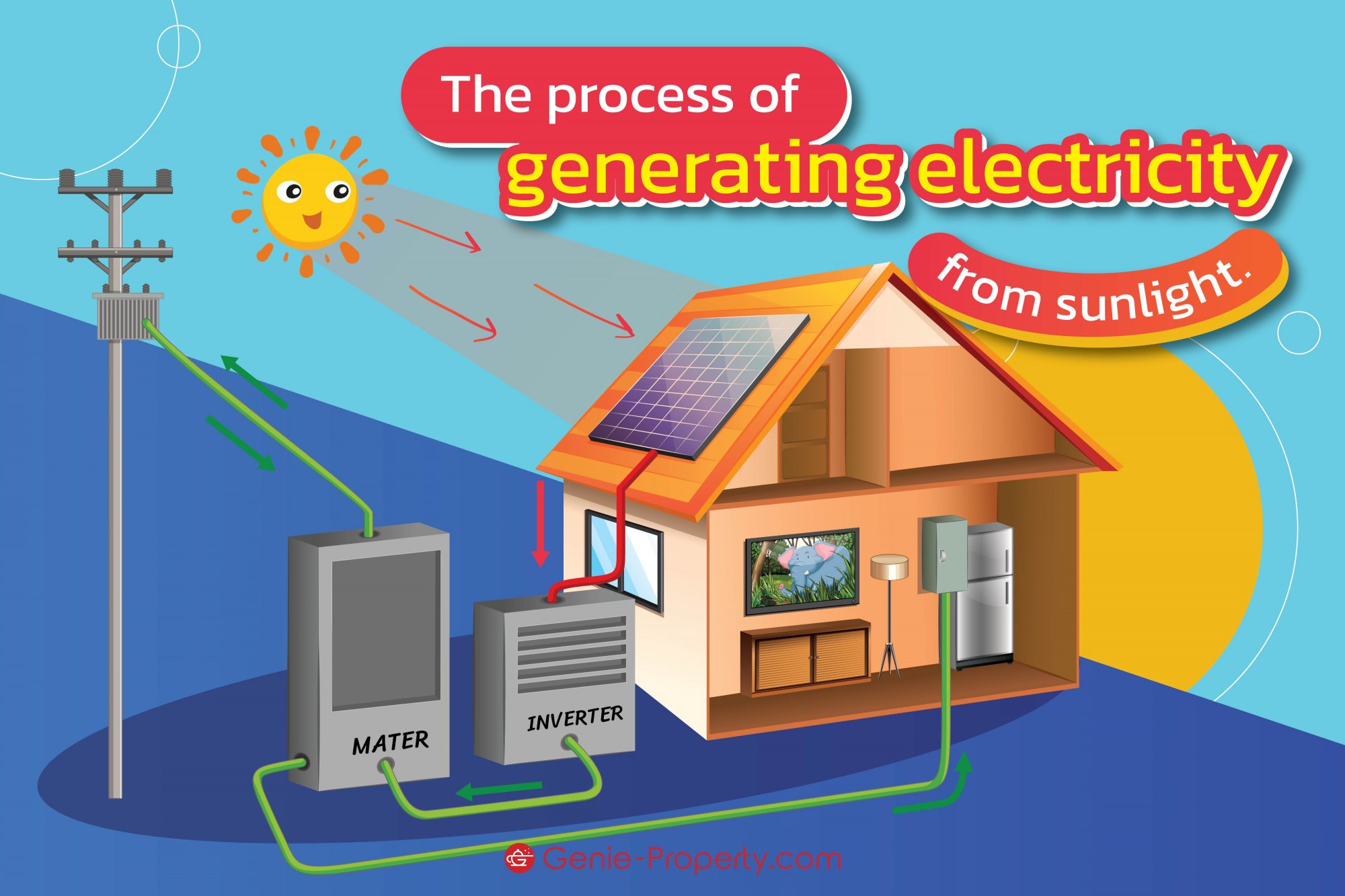
3. Solar Cell - How many types are there?
Currently, there are three main types of solar panels, which are as follows
- Monocrystalline Silicon Solar Cells
- Polycrystalline Silicon Solar Cells
- Thin Film Solar Cells
Each type has its own characteristics and performance, catering to different needs and preferences.
1. Monocrystalline Silicon Solar Cells
Monocrystalline Silicon Solar Cells are manufactured from single-crystal silicon, also known as mono-Si or single-Si. They have a rectangular shape with all four corners cut off, and they appear dark in color.
These solar cells are made from highly pure silicon through a process called the Czochralski process, which involves melting and solidifying the silicon to form a single crystal structure. This method ensures maximum efficiency and reduces the usage of monocrystalline silicon raw materials.
Advantages of Monocrystalline Silicon Solar Cells
- Highest efficiency: Monocrystalline solar cells have the highest efficiency among solar panels, typically ranging from 15% to 20%. This is due to the use of high-grade silicon.
- Space-efficient: They require less installation space while producing nearly four times the electricity compared to other types of solar panels.
- Long lifespan: They have the longest lifespan, averaging over 25 years.
- Better performance in low-light conditions: Monocrystalline solar cells can generate more electricity in low-light conditions compared to other types of solar panels.
Disadvantages of Monocrystalline Silicon Solar Cells
- Highest cost: They are the most expensive among all solar panel types.
- Susceptible to shading and dirt: Without proper maintenance, monocrystalline solar panels may accumulate dirt or be partially shaded, which can lead to circuit or inverter damage due to high overvoltage.
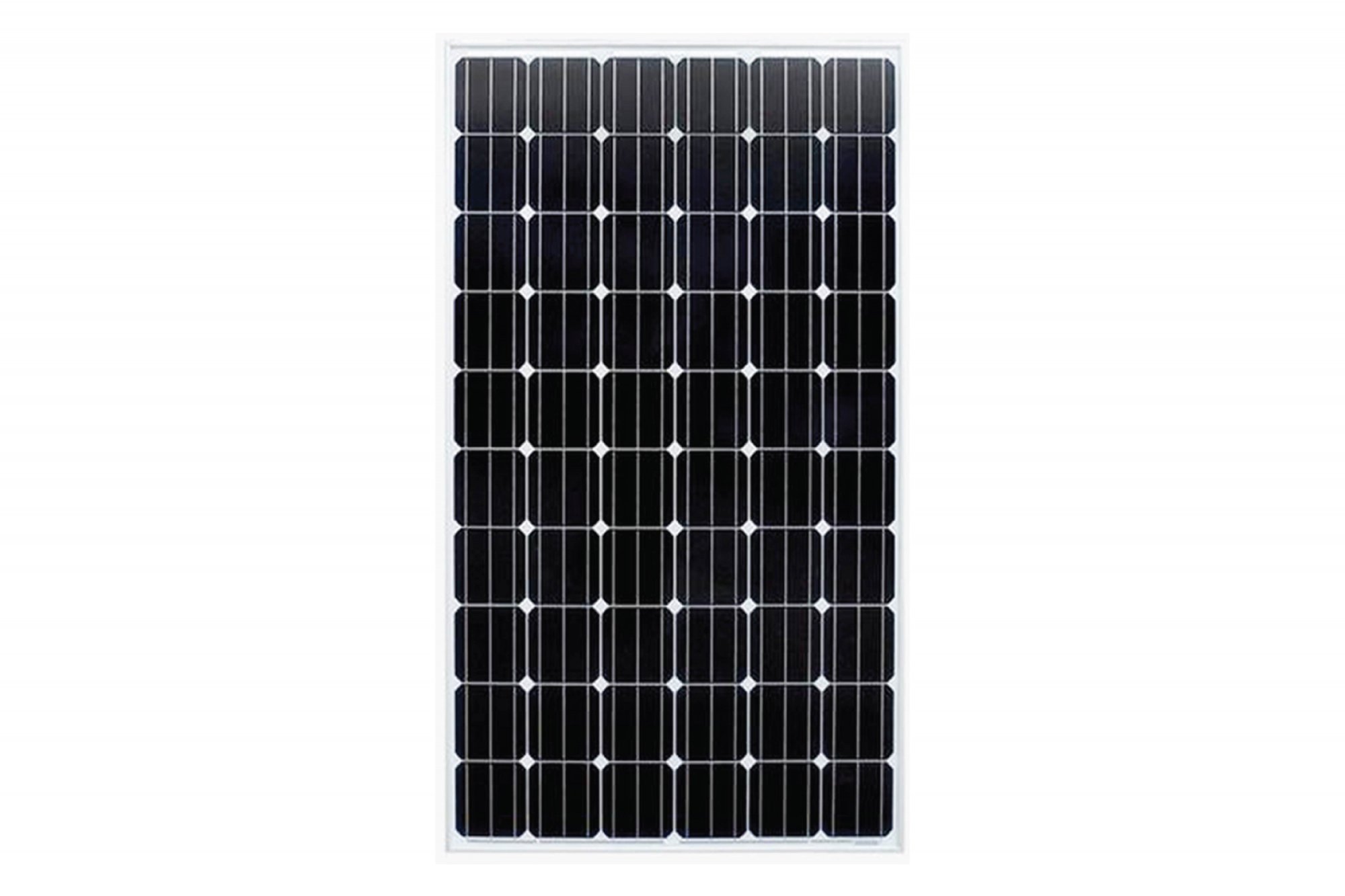
2. Polycrystalline Silicon Solar Cells
Polycrystalline Silicon Solar Cells, also known as polycrystalline or p-Si cells, are the first type of solar cells produced from general silicon ingots. They are sometimes referred to as multi-crystalline or mc-Si cells. They have a rectangular shape without cut-off corners, and the color of the solar panel is a less intense shade of blue.
The production process for these solar cells involves melting silicon or glass to a liquid state and then pouring it into rectangular molds.
Advantages of Polycrystalline Silicon Solar Cells
- Better performance in high-temperature conditions compared to monocrystalline solar cells.
- Simpler manufacturing process with less complexity, requiring a lower quantity of silicon compared to monocrystalline solar cells.
- Lower cost compared to monocrystalline solar cells.
Disadvantages of Polycrystalline Silicon Solar Cells
- The panels have a pale, bluish color, which may not be aesthetically pleasing or suitable for certain environments.
- Lower energy conversion efficiency, typically ranging from 13% to 16%, compared to monocrystalline solar cells.
- Less efficient in low-light conditions and lower power output per unit area compared to monocrystalline solar cells.
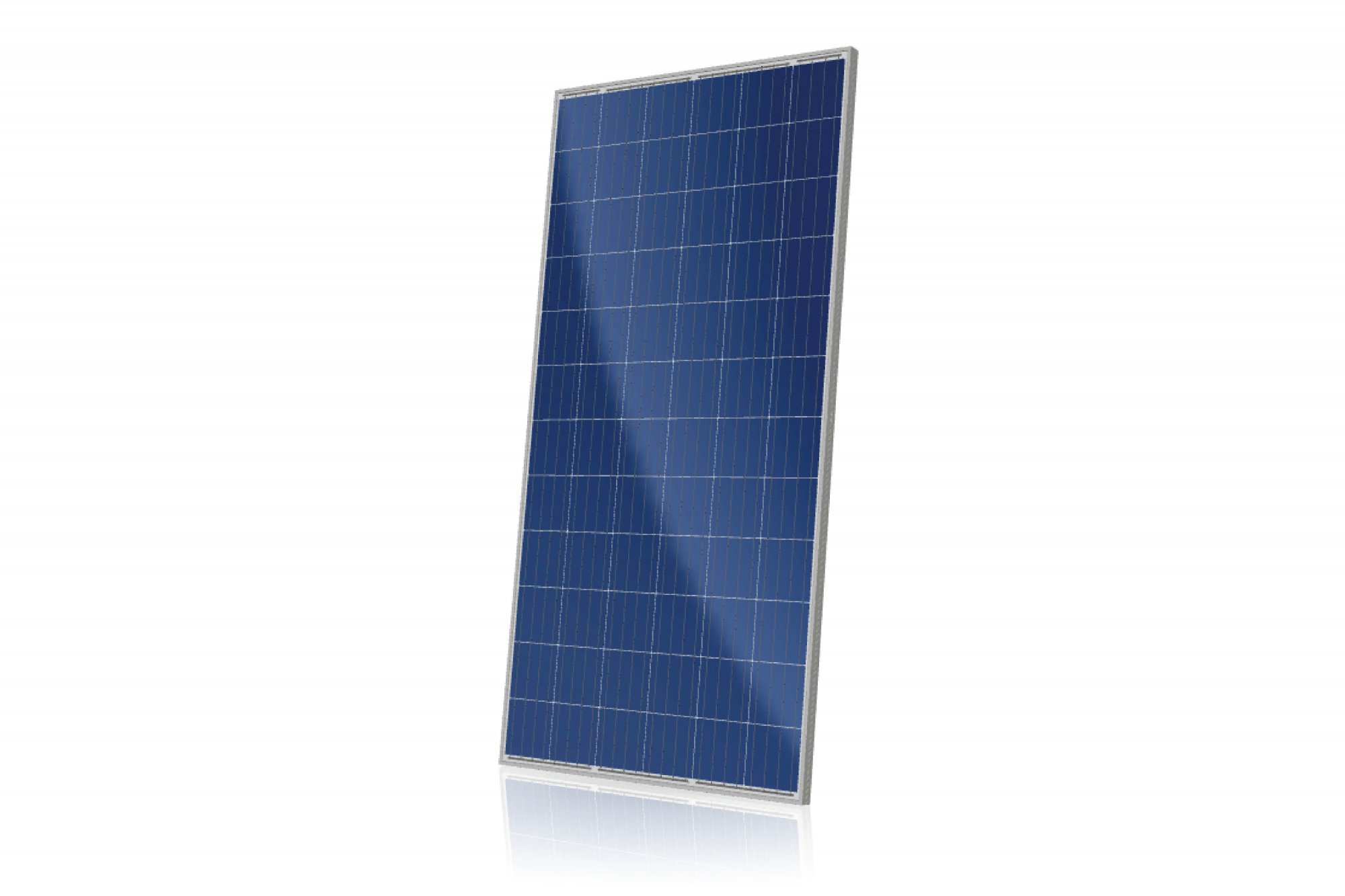
3. Thin Film Solar Panels
The process of producing thin film solar panels involves layering materials that can convert sunlight into electrical energy. This is why we refer to this type of solar panel as "thin film."
It's important to note that these solar panels are not widely popular for residential installations due to their relatively low average power conversion efficiency, ranging from 7% to 13%. Additionally, they have a shorter lifespan compared to other types of solar panels.
Advantages of Thin Film Solar Panels
- The manufacturing process is less complex and less costly, allowing for large-scale production.
- They have lower temperature coefficient, meaning they are less affected by high-temperature conditions compared to other types of solar panels.
- If you have ample available space, thin film solar panels can be a viable option for installation.
Disadvantages of Thin Film Solar Panels
- Lower power conversion efficiency compared to other types of solar panels.
- They require a larger quantity of supporting structures and additional components, such as wiring and connectors, which can lead to higher installation costs.
- Less efficient in low-light conditions, resulting in lower power output per unit area compared to other types of solar panels.
- Not suitable for rooftop installations due to limited space availability.
- Shorter warranty period compared to crystalline silicon-based solar panels.
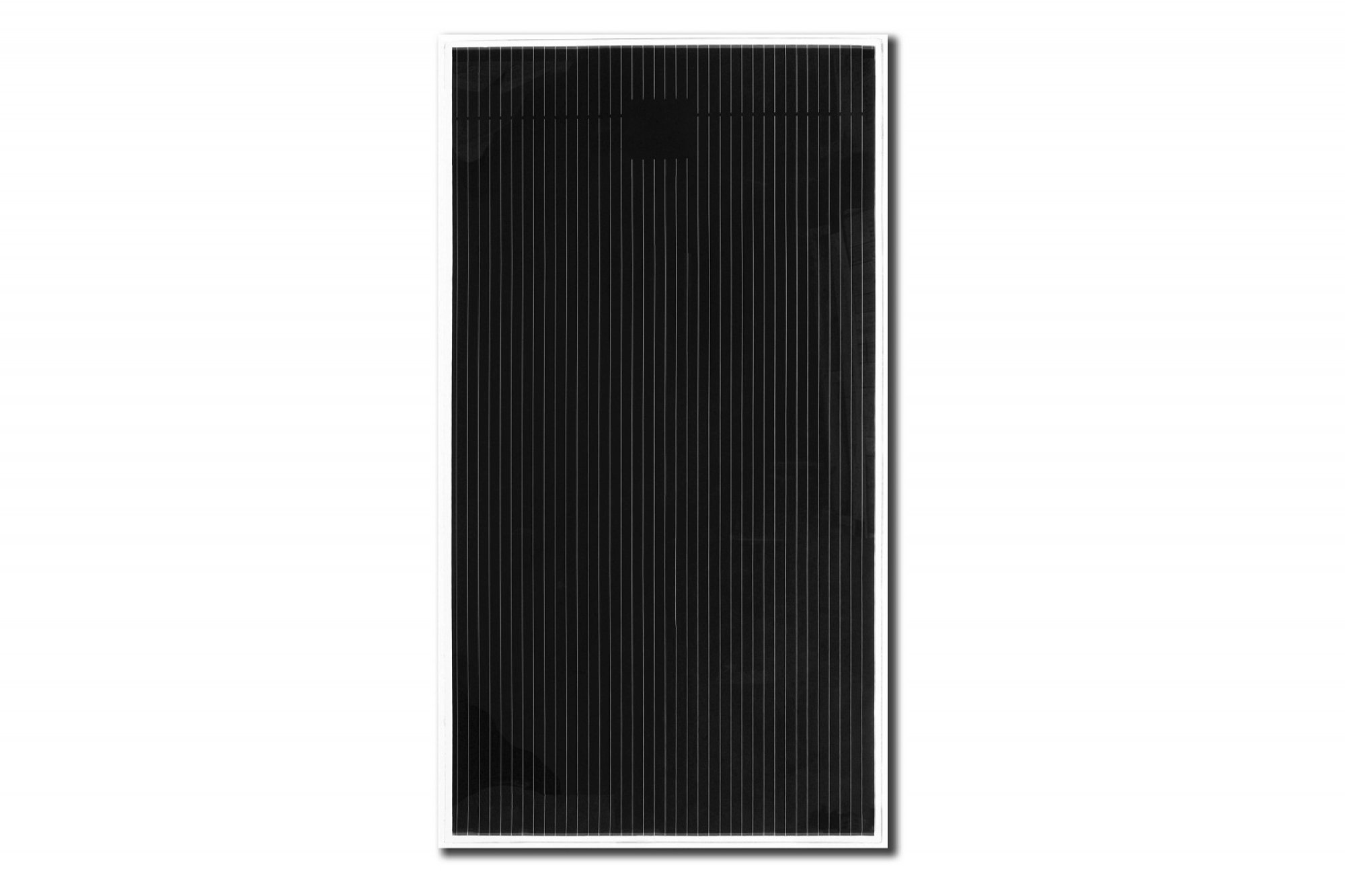
4. Systems of Solar Panels
For solar panels, they can generally be categorized into three main systems, depending on their suitability for usage and installation space. These three systems are as follows:
4.1 Off-Grid System
This is a solar panel system that operates independently from the electric grid. It can generate electricity from solar panels and directly use it or store the excess energy in batteries. This system doesn't require permission from the electric utility company and is suitable for locations without access to grid electricity, such as remote areas, mountainous regions, or islands.
4.2 On-Grid System
This is a solar panel system that utilizes both electricity from the grid and the electricity generated by the solar panels. It is suitable for residential homes. In this system, the solar panels produce electricity that is immediately consumed without energy storage in batteries. It is important to note that prior permission from the electric utility company is required for this system. Currently, it is the most popular system.
4.3 Hybrid System
The hybrid system combines elements of both the Off-Grid and On-Grid systems. Simply put, it connects the solar panel-generated electricity with the grid electricity and uses power from both sources along with battery backup. In this system, the electricity generated by the solar panels cannot be sold back to the utility company. The installation of this system is relatively expensive, and it is not widely preferred by people.
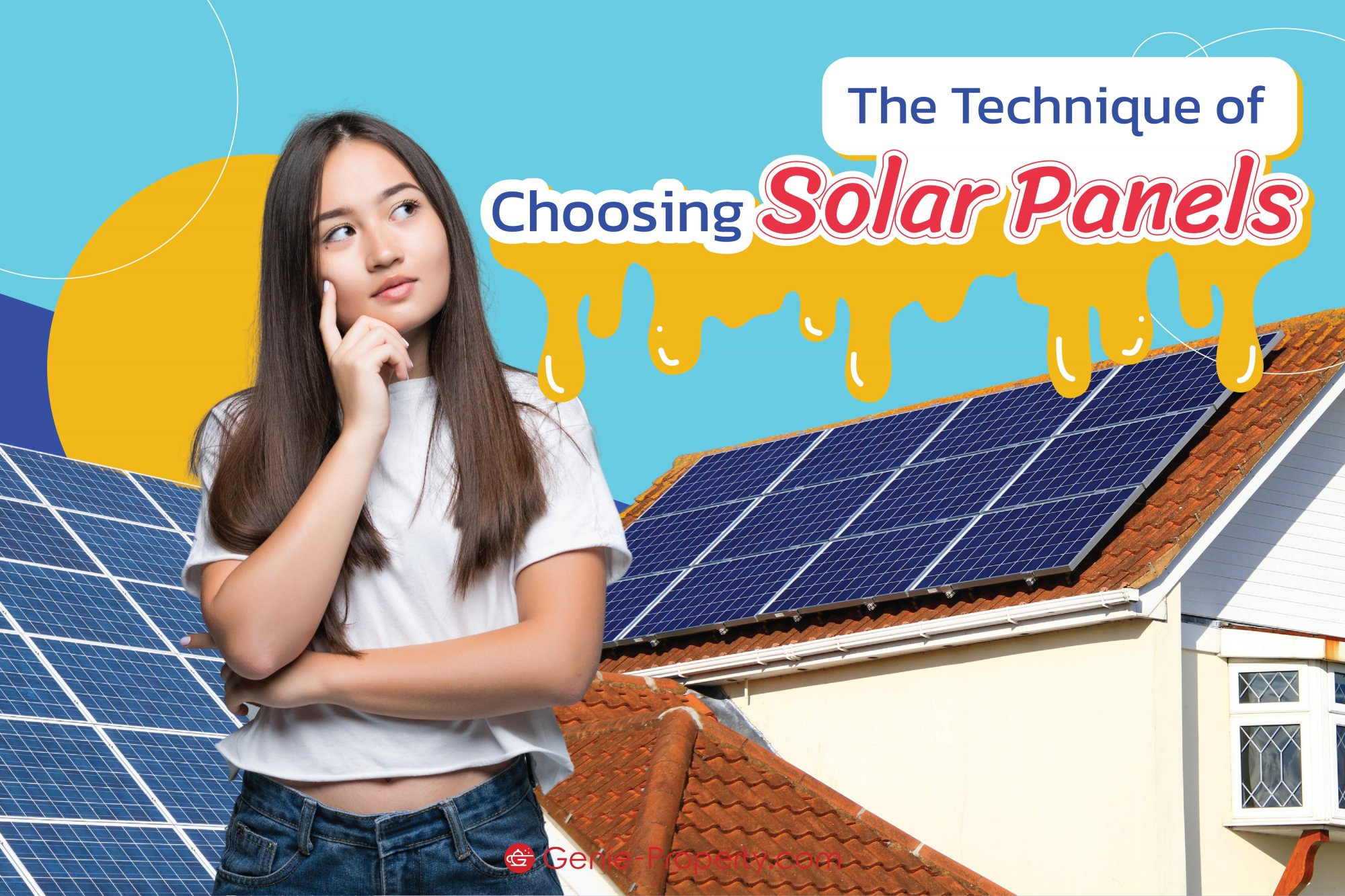
5. Tips for selecting solar panels
As mentioned earlier, the trend of environmental conservation is gaining momentum. Many companies and real estate projects are increasingly turning to the installation of solar panels. Moreover, solar panels have significantly improved in quality in recent times. Therefore, I, Genie, would like to share some tips for choosing solar panels with you all.
Here they are:
1. Choosing the Right Type of Solar Panels for Your Home
When it comes to selecting solar panels, the first thing to consider is your home. We need to determine which type of solar panels can be installed on your roof and provide the maximum benefits. There are two main types of panels suitable for residential installations: monocrystalline solar panels and polycrystalline solar panels. These two types do not differ significantly in quality.
2. Consider Size, Power Output, and Efficiency
Once you have chosen the type of solar panels, the next step is to consider their value and performance. Panels with higher power output will typically have larger physical dimensions. Therefore, you need to consider the available installation space.
3. Compare Power Output and Use Quality Equipment
When choosing solar panels, you need to consider the total electricity consumption within your home, including air conditioning, refrigerators, televisions, and all other electrical appliances. This helps you calculate the required power output and choose the appropriate inverter. I recommend calculating the total electricity consumption at approximately 30% - 40%.
Additionally, after installing solar panels, it is important to use standardized equipment. This includes selecting cables that can withstand temperatures up to 80 degrees Celsius and circuit breakers that provide good water and heat resistance.
4. Price and Warranty
Price is an important consideration. However, it is crucial to focus on value for money, quality, and the equipment being used. Opting for the most expensive solar panels does not necessarily mean you are getting the best product. Another key factor to consider is the warranty period. Typically, solar panels come with a warranty for manufacturing defects and damage for around 10 years. However, if you choose a top brand with a proven track record and global recognition, they may offer longer warranties for the panels, inverters, and after-sales service.
5. Introducing Real Estate Projects: Buy a House with Solar Panels
For those of you who are interested in purchasing a house that comes with solar panels, today, Genie has gathered some real estate projects that offer houses with integrated solar panels. Let's take a look at these projects together.
1. Sena Ville Boromratchachonnani-Sai 5 Project
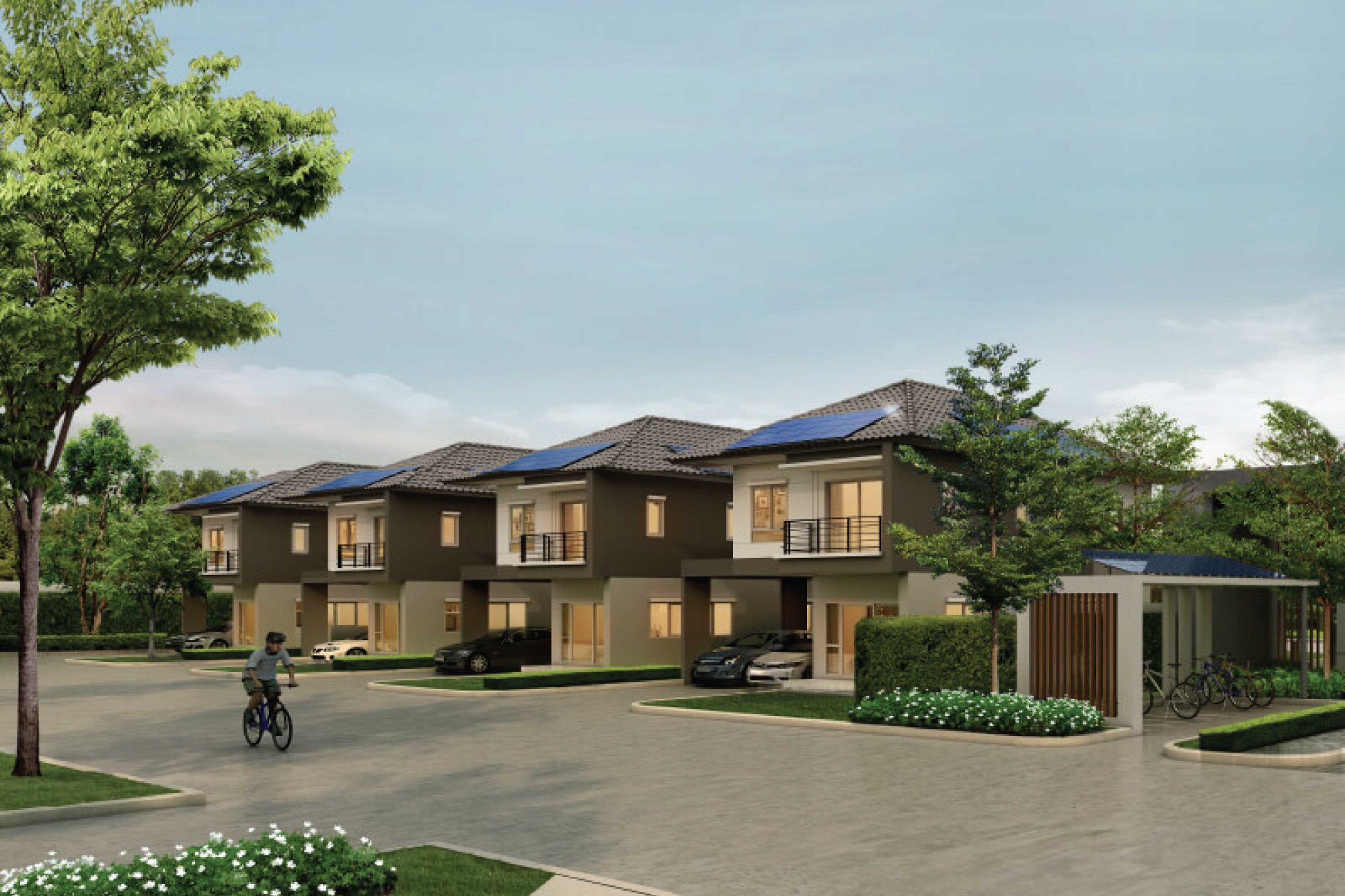
Location: Bang Toei Soi 5-6, Tambon Bang Toei, Amphoe Sam Phran, Nakhon Pathom Province.
Area : Approximately 33-9-25.25 rai.
Project Description: Twin houses (2 floors) and detached houses (2 floors).
Design Style: This project is designed in a modern style to accommodate the lifestyles of residents in all forms.
Layout/Room Size:
- OZONE: Living area of 135 sq.m.
- ORIGIN: Living area of 157 sq.m.
Starting Price: 4.99 - 7 million baht.
Completed and Ready to Move-In: The project has been partially completed and is ready for occupancy.
Project Highlights:
- This project is built under the concept of "SENA SOLAR HOUSE," utilizing solar energy within the project to help reduce electricity costs.
- Solar Scale UP! Allows for the addition of solar panels based on the residents' lifestyle.
- Designed to accommodate elderly residents.
- Equipped with a 3-tier security system."
2. Sena Park Ville Ramintra - Ring Road
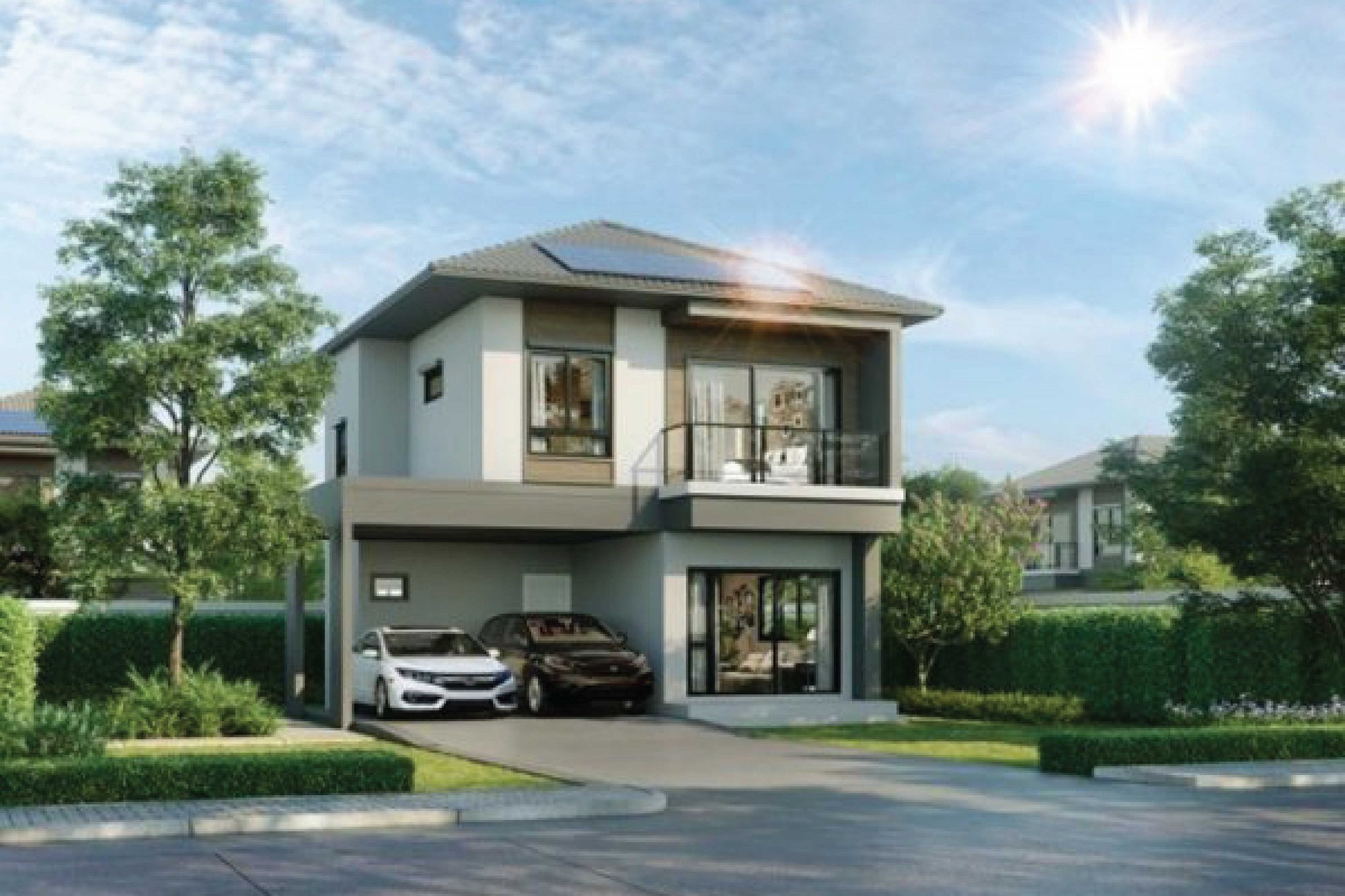
Location: Along Kanchanaphisek Ring Road (connected directly from Ramintra Road, km.9), Khan Na Yao Sub-district, Khan Na Yao District, Bangkok.
Area: Approximately 28-2-92.5 rai.
Project Type: 2-storey detached houses and 2-storey innovative concept houses.
Design Style: This project is designed in an Eco Modern style with a heat insulation system on the roof and the use of shading on the facade to prevent heat from entering the house.
Layout/Room Sizes:
- Ozone: Living area of 135 square meters.
- Origin: Living area of 157 square meters.
Starting Price: 6-8 million baht.
Construction Status: The project has been completed and ready for occupancy since the year 2019.
Key Features of the Project:
- This single-house project is built under the concept of "Solar Smart Village" to help reduce electricity costs with solar panels.
- Solar Scale UP! It allows residents to add more solar panels according to their lifestyle.
- Shuttle Car: Clean energy-powered transportation service to and from the nearest train station.
- It incorporates a 5-tier security system.
3. Sense Grand Home Rangsit - Tiwanon
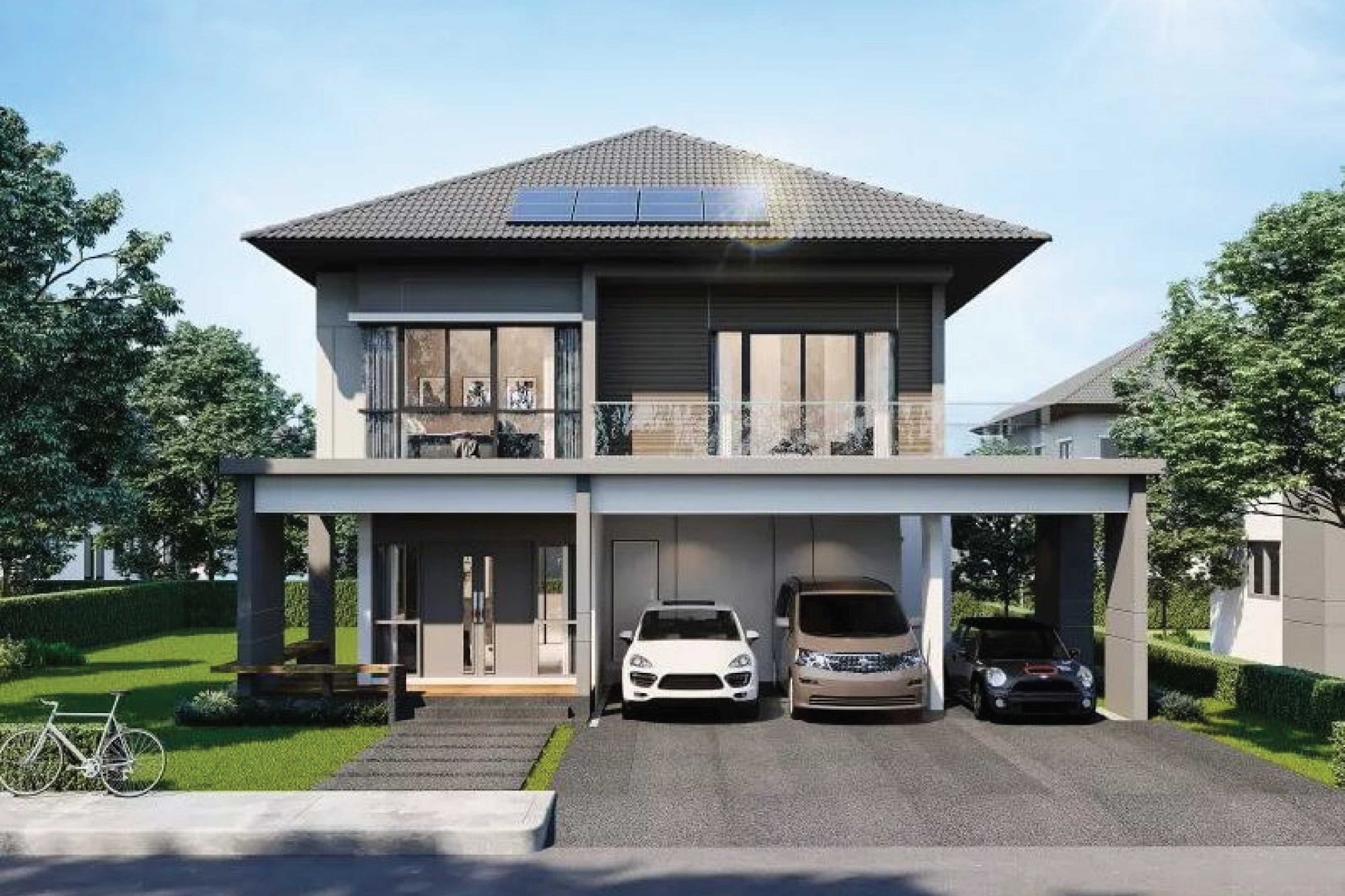
Located: Rangsit-Bang Phun Road, Bang Phun Sub-district, Mueang District, Pathum Thani Province, 12000.
Area: Approximately 8-0-33.4 Rai.
Project Type: 2-story detached houses.
Design Style: Innovative Green Tech for Life detached houses with a 5-level security system.
Room Types/Sizes:
- Ravi: Living area of 170 sq.m.
- Arun: Living area of 183 sq.m.
- Sawittha: Living area of 194 sq.m.
- Atitaya: Living area of 252 sq.m.
Starting Price: 6 - 13 million baht.
Construction Status: The project has been completed, and some units are ready for occupancy.
Key Features of the Project:
- This detached house project is built under the concept of "Green Tech for Life" to reduce electricity costs using solar panels and provide a comfortable living environment in harmony with nature.
- Solar Scale UP! allows residents to add additional solar panels according to their lifestyle.
- Smart Safety system provides 24-hour mobile connectivity for peace of mind.
- The project is constructed with red bricks, ensuring durability and strength.
4.Sena Park Grand Rama 9
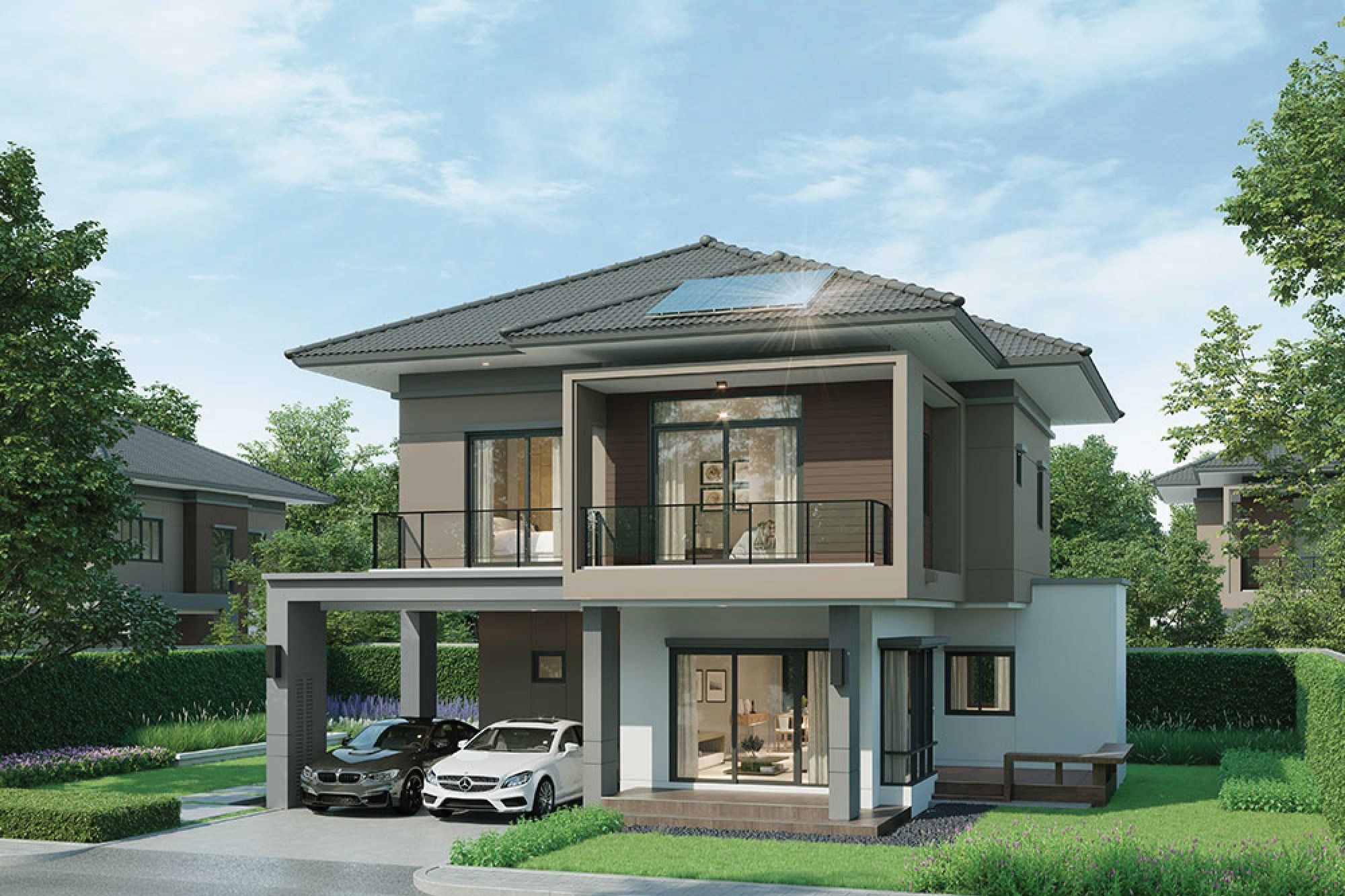
Location: Ram Inthra Road, Khan Na Yao Subdistrict, Khan Na Yao District, Bangkok 10230.
Area: Approximately 42-2-17.6 rai.
Project Type: Two-story detached houses.
Design Style: The project is designed in an Eco Modern style with ventilation systems and ample natural light.
Layout/Room Size:
3 Types:
- Geo Smart: Living area of 154 square meters.
- Aqua Smart: Living area of 167 square meters.
- Oxy Smart: Living area of 198 square meters.
Starting Price: 8-12 million baht.
Construction Status: The project has been completed and is ready for occupancy.
Project Highlights:
- This detached house project is built under the concept of "Green Smart Design" to reduce electricity costs with solar panels and to provide a comfortable living environment in harmony with nature.
- Solar Scale UP! allows residents to add additional solar panels based on their lifestyle.
- It is the first project in Thailand to include solar panels and support electric vehicle charging in individual houses.
How are you doing with the information prepared by Genie today? I must say that the trend of sustainable energy is incredibly strong. Many people are interested in using solar panels, but there is still a lack of clear information. Solar panel technology is relatively new for our homes, and some may not know which type or system to choose, as well as the budget required for installation. Genie believes that the above information will provide answers to many of your friends and help them make informed decisions about which type of solar panels are suitable for them.
You can follow and support the team of writers by giving them a thumbs-up on the Facebook Fanpage below
LINE: @genie-property.com
FACEBOOK: Genie-Property.com
Website: www.genie-property.com
EMAIL: sales@genie-property.com
CALL CENTRE: 093-232-9888, 064-931-8666
Special thanks for the information from:
KLC Bright
Kachathailand
NK Solargroup

